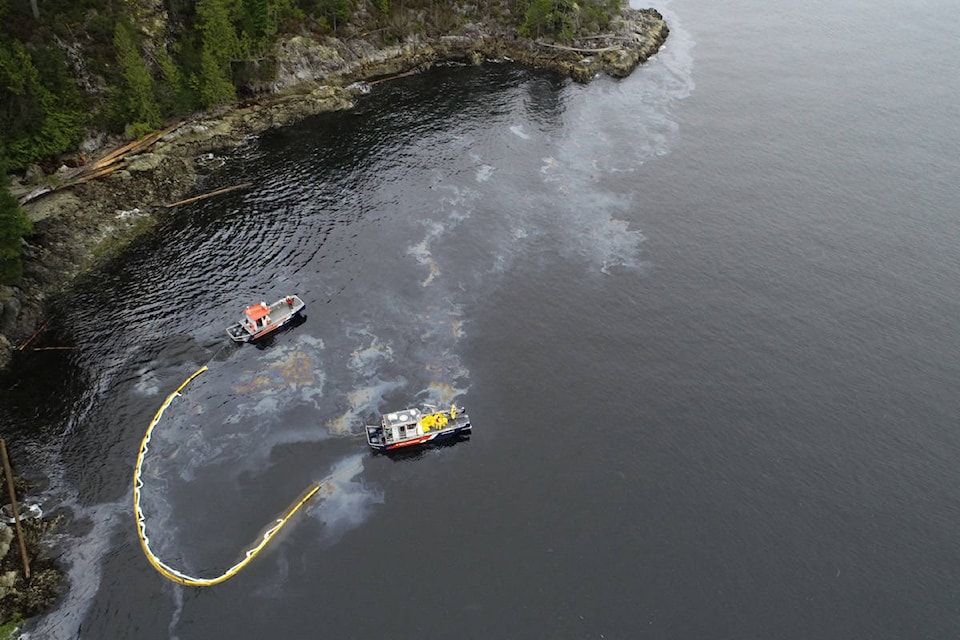Canadian Coast Guard and First Nations continue to contain the active oil slick caused by the historic Bligh Island shipwreck leak off Northwest Vancouver Island.
In an update, the Unified Command – the spill response team consisting of federal, provincial and First Nations members – said that despite the minimal quantity of oil on the water, there has been some negative impact to the marine environment and wildlife in the area near Nootka Sound.
“Sadly one sea otter and one blue heron have become oiled. Crews are attempting to capture the otter to transport it to the Vancouver Aquarium Marine Mammal Rehabilitation Centre,” the Unified Command said in a statement, Tuesday.
A deceased sea otter was also found in the area and a necropsy is being performed to determine if it died due to oil exposure.
READ MORE: Active marine oil slick near Nootka Sound tied to historic 1968 Bligh Island shipwreck
The team also said there is potential for more wildlife to be impacted due to the slick. It has developed a wildlife response plan to work towards the on-site rehabilitation of animals.
“We have a team of wildlife and marine mammal experts who are focused on keeping wildlife away from the shipwreck site, and capturing and rehabilitating any impacted animals.”
Fish farms located north of the site are not affected, so far, as ocean currents are moving the oil to the south and southeast. In the event the direction changes, the team has said it has an additional 10,000-foot curtain boom that can be deployed to protect the fish farms.
Some shorelines close to the shipwreck were impacted by oil and a shoreline clean-up assessment team is preparing to clean the impacted sites.
On Dec. 11 – after a months-long investigation by the Canadian Coast Guard – an oil spill near the east end of Bligh Island was found to be originating from the cargo ship MV Schiedyk that sunk in 1968, shortly after departing from Gold River.
Since then a 40-person team has been on-site responding to the spill along with six marine pollution response vehicles (with two more expected to arrive soon).
Sixteen thousand feet of boom have been deployed to protect areas of ecological, socio-economic and cultural sensitivity. A continuous and slow discharge of oil pollution is coming from the MV Schiedyk and the team does not anticipate a sudden larger release of fuel.
“Crews and assets are on scene recovering the oil as it floats to the surface using a tandem sweep between two vessels. Curtain boom and sorbent boom is held between the two vessels as they sweep the water. We will also be deploying a Harbour Buster II to capture oil product that is being moved by the ocean current.”
The amount of oil released has yet to be determined as what has been recovered is mixed with salt water making it difficult to estimate.
The cost to remediate the pollution risk caused by MV Schiedyk has also not been determined yet by the Unified Command. It will release further details as they become available.
For more news from Vancouver Island and beyond delivered daily into your inbox, please click here.
